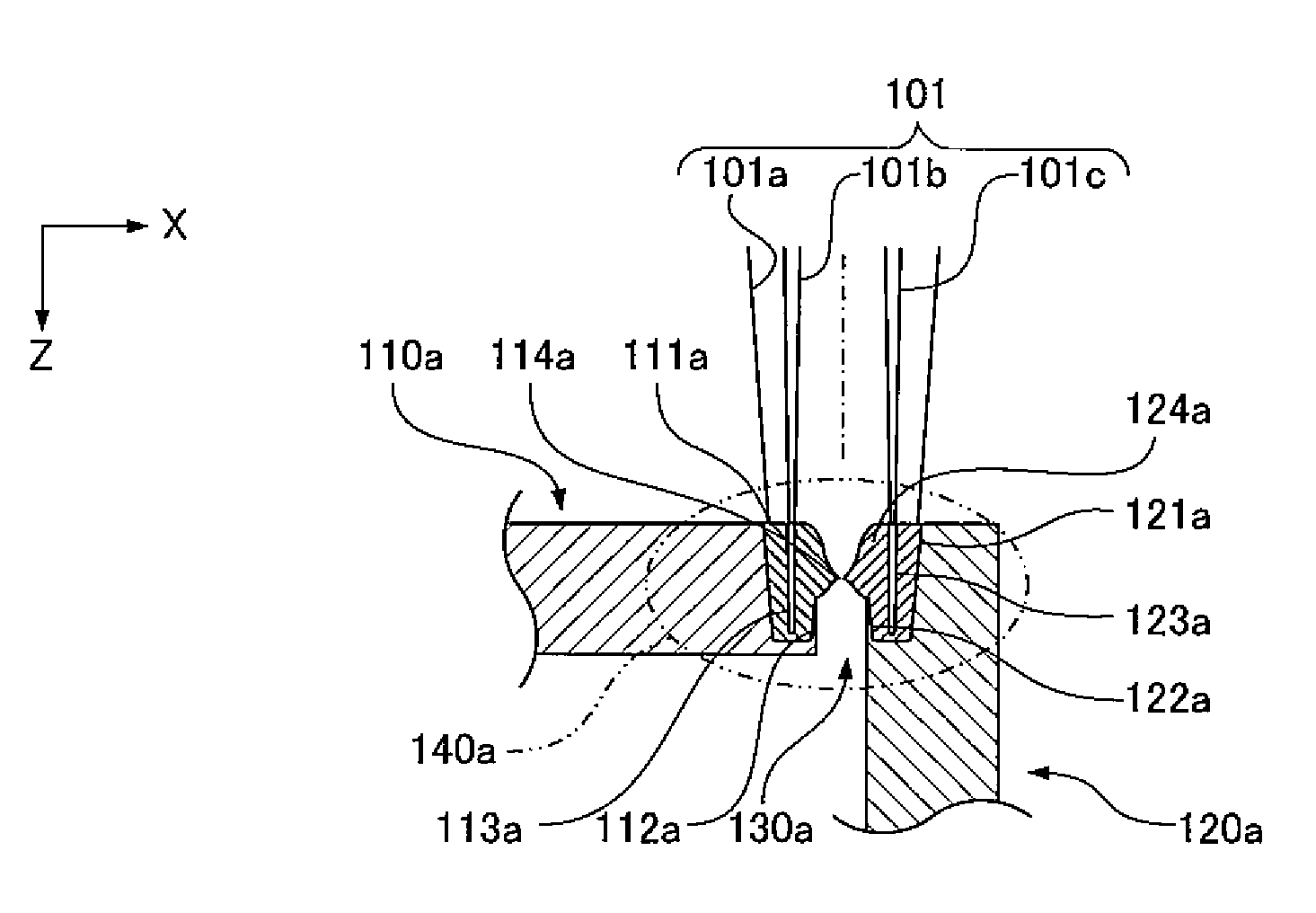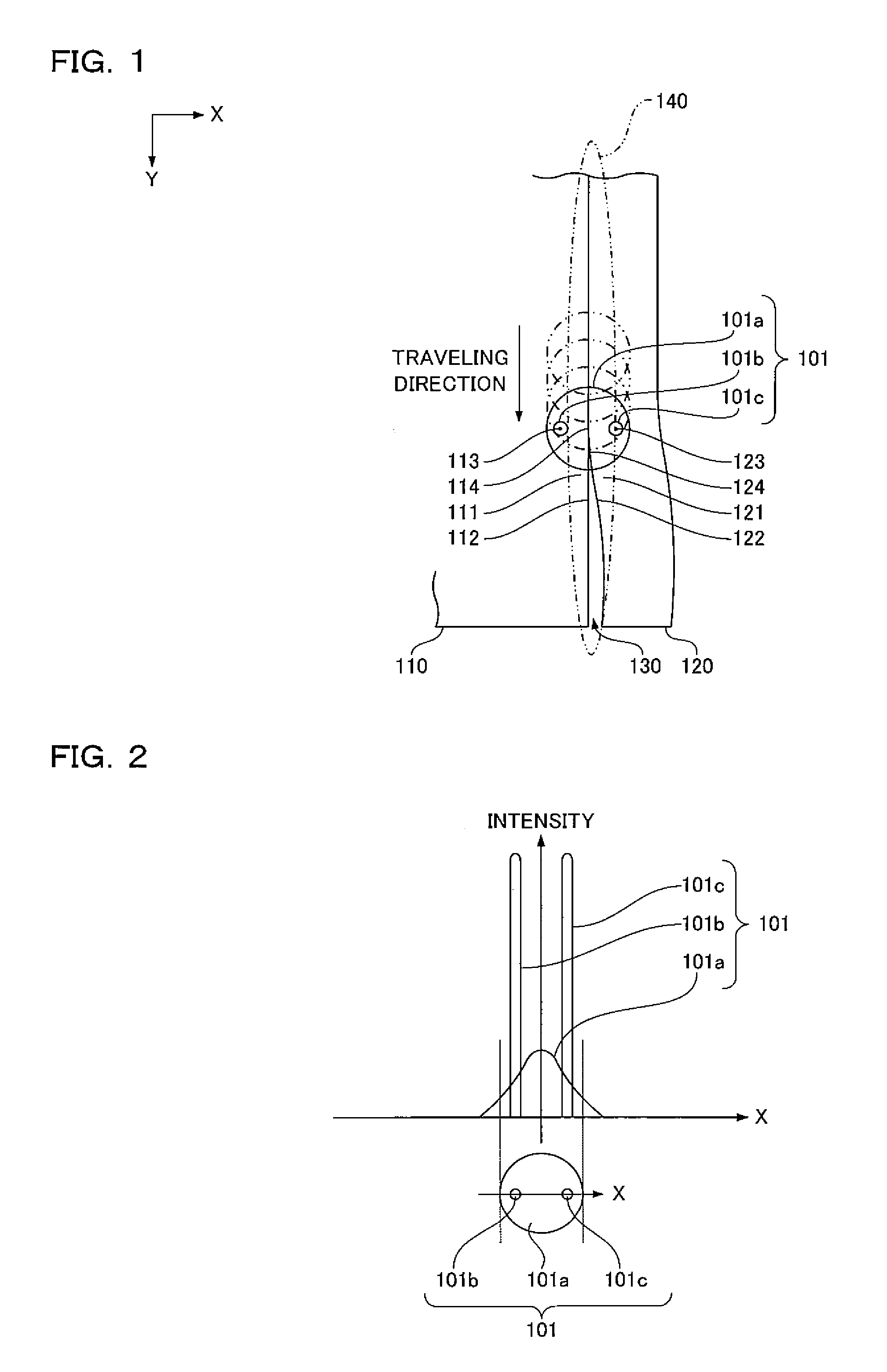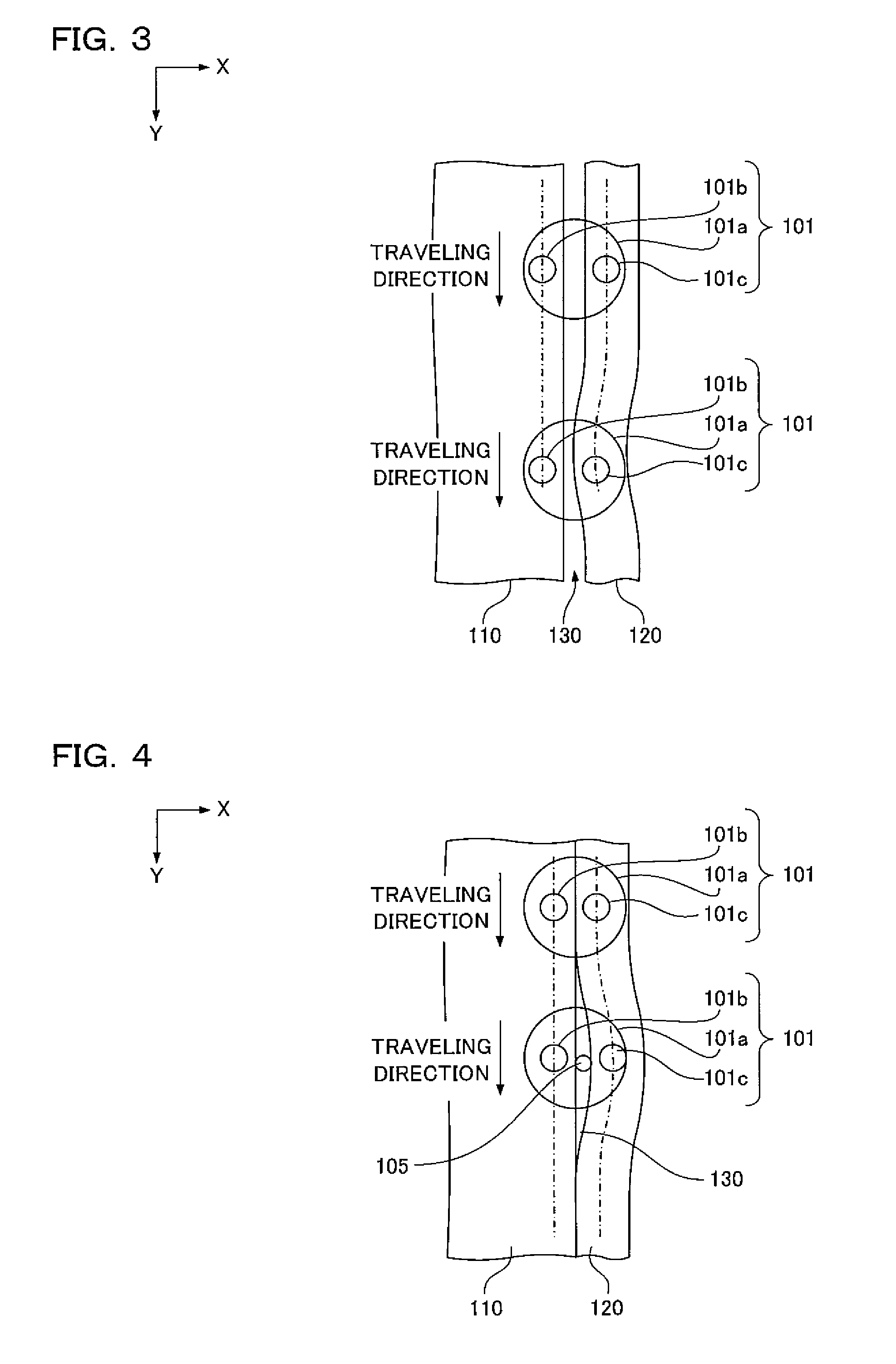Method and apparatus for using multiple laser beams to weld members that are separated by a gap
a technology of laser beams and gap welding, which is applied in the direction of laser beam welding apparatus, welding apparatus, manufacturing tools, etc., can solve the problems of inability to completely eliminate spattering, short circuit, and disadvantages of conventional hybrid laser processing methods, and achieves low thermal effect, high speed, and eliminate the entrance of spatter
- Summary
- Abstract
- Description
- Claims
- Application Information
AI Technical Summary
Benefits of technology
Problems solved by technology
Method used
Image
Examples
first embodiment
(First Embodiment)
[0058]Now, a first embodiment according to the present invention will be described.
[0059]First, in a fusion welding method of this embodiment, as shown in FIG. 1, a hybrid laser beam 101 of FIG. 2 is used to butt-join a first member 110 and a second member 120. At this time, the hybrid laser beam 101 is applied to a gap 130 between the first member 110 and the second member 120 and to a periphery 140 of the gap while being moved along the gap 130 between the first member 110 and the second member 120 to fill the gap 130 with molten metal from both sides of the gap.
[0060]In the drawings, X and Y directions are horizontal and Z direction is vertical.
101>
[0061]The hybrid laser beam 101 is obtained by mixing, on a low-intensity laser beam 101a, a first high-intensity laser beam 101b and a second high-intensity laser beam 101c. The low-intensity laser beam 101a has intensity distribution such as Gaussian distribution. The first high-intensity laser beam 101b and the sec...
example 1
FUSION WELDING EXAMPLE 1
First Butt-Welding Example
[0102]In the following description, the hybrid laser beam 101 is applied directly from above to butt-weld a first member 110a and a second member 120a. The drawings show a state as viewed from the traveling direction of the hybrid laser beam 101. In the drawings, the position of the optical axis of the low-intensity laser beam 101a is indicated by a dashed line.
[0103]As an example, as shown in FIGS. 7A to 7C, the first member 110a and the second member 120a are herein metal plates. The first member 110a is placed so as to extend in the X direction. The second member 120a is placed so as to extend in the Z direction. The side surface of the right end of the first member 110a is butted against the side surface of the upper end of the second member 120a. The upper surface of the right end of the first member 110a is flush with the upper surface of the upper end of the second member 120a. A gap 130a extends along the Y direction between ...
example 2
FUSION WELDING EXAMPLE 2
Second Butt-Welding Example
[0118]Next, in the following description, the hybrid laser beam 101 is applied directly from the side to butt-weld a first member 110b and a second member 120b. The drawings show a state as viewed from the traveling direction of the hybrid laser beam 101. In the drawings, the position of the optical axis of the low-intensity laser beam 101a is indicated by a dashed line.
[0119]As an example, as shown in FIGS. 9A to 9C, the first member 110b and the second member 120b are herein metal plates. The first member 110b is placed so as to extend in the X direction. The second member 120b is placed so as to extend in the Z direction. The lower surface of the right end of the first member 110b is butted against the upper surface of the upper end of the second member 120b. The side surface of the right end of the first member 110b is flush with the side surface of the upper end of the second member 120b. A gap 130b extends along the Y directio...
PUM
| Property | Measurement | Unit |
|---|---|---|
| width | aaaaa | aaaaa |
| wavelength | aaaaa | aaaaa |
| wavelength | aaaaa | aaaaa |
Abstract
Description
Claims
Application Information
 Login to View More
Login to View More - R&D
- Intellectual Property
- Life Sciences
- Materials
- Tech Scout
- Unparalleled Data Quality
- Higher Quality Content
- 60% Fewer Hallucinations
Browse by: Latest US Patents, China's latest patents, Technical Efficacy Thesaurus, Application Domain, Technology Topic, Popular Technical Reports.
© 2025 PatSnap. All rights reserved.Legal|Privacy policy|Modern Slavery Act Transparency Statement|Sitemap|About US| Contact US: help@patsnap.com



